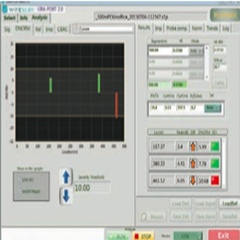PES recently caught-up with the affable Vidar Bergli, VP Sales for Wirescan AS. He explained about the company’s innovative technology, its plans for future growth and the benefits of having major financial backers…
PES: Welcome to PES magazine. Would you like to introduce the company to our readers and explain how you serve the wind industry in Europe?
Vidar Bergli: Wirescan is a Norwegian high-tech company that uses its own patented LIRA® Technology to provide services and products for cable condition assessment, cable condition monitoring and cable fault location.
The LIRA Technology was developed in a research program at Institute for Energy Technology (IFE) in Norway, and has, since 2006, been further developed and commercialised by Wirescan. You can say we serve the wind industry by giving the cable owners and operators a good night sleep by providing valuable information about the condition of their cable assets.
PES: What prompted the company to diversify into wind?
VB: Our cable condition assessment technology is suitable for all kinds of electrical cables, and the cables are critical for wind energy to bring the power generated by the turbines into the power grid.
Knowing something about the condition of the cables is especially important for offshore wind farms, where the visual inspection of the cable is most of the time impossible because the cables are buried on the sea bed. And if they are exposed, a visual inspection is both expensive and takes a long time (using a Remote Operated Vehicle (ROV) to do the job). Wirescan can at a low cost, and by only accessing the cable ends, collect the necessary data to perform an analysis of the cable condition.
PES: Can you talk us through the LIRA technology and briefly explain its benefits?
VB: The LIRA technology is based on the transmission line theory, through the estimation and analysis of the complex line impedance as a function of the applied signal frequency.
To explain it the easy way, we connect our LIRA tool to the ends of a de-energised cable, and apply a low voltage frequency sweep into the cable that consists of 10,000 different frequencies. We compared the applied signal with what is returned from the cable, and will detect and locate global and local impedance changes along the cable insulation.
These impedance changes can be caused by harsh environment conditions (high temperature, humidity, radiation) or by mechanical impacts (over-bending, anchoring or fishing incidents) or local abnormal environmental conditions.
The benefits of this are:



























